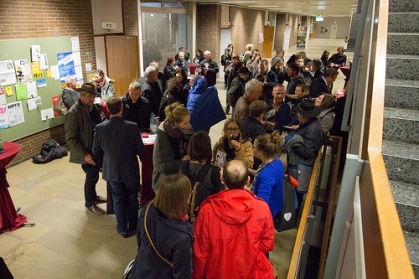Tags
connectedness, eci831, edtech, education, intimacy, social media, teacher
Earlier this week, I looked at the social media app: Snapchat. To extend beyond just becoming comfortable with the apps and programs students are using, how can you use this in your classroom? Vicki Davis provides several suggestions including using YouTube for students to host their own show or document their learning. Ultimately, I believe that social media can be a force for good in the classroom, even in the casual use that student use it for (when appropriate). It represents a significant part of modern development and learning.
In this post however, I intend to address the transition of social media. In Amanda Lenhart’s article through the Pew Research Center, it stated that 71% of students used more than one form of social media, with the most being on Facebook at 71% and only 41% on Snapchat… my students are more likely to represent if you switched each apps respective numbers. When we further observe the stats on the same site, it states that girls dominate visually-oriented media. To pose an inference about this data, and unfortunately in an overgeneralizing heterosexist lens, the margin of numbers I would expect to diminish as male students follow what the females share. With more visuals, we see Snapchat overtake Facebook. Given student feedback? Snapchat is better for their daily communication desires. Why is SnapChat so much better?
Two things: Intimacy and connectedness.
Intimacy.
Students and adults have already learned to “curate their content” and create public social media images and private lives to protect themselves from the watchful eye of future employers, but this addresses privacy rather than intimacy. As well, many students are aware of the possibility that individuals can still take screenshots without being caught. Students achieve a greater amount of intimacy when you can actually see the person you’re speaking (or texting) to. Humans and animals learn our facial expressions to adapt and become socialized, it’s natural. This is just further learning of intimacy with others. In an education-setting, this can even help students who struggle with reading social cues get experience! The sharing of inside jokes or personal confessions simply enhances the intimate social experience. Going beyond novel (reading), to drawings (pictures), to film (video). It’s important to differentiate in my definition of intimacy. I refer to it as the development of emotional closeness with others, not in the sexual nature. Students also need to be aware of and learn that a (possibly provocative) picture that may be gone in 10 seconds may not disappear.
Connectedness.

Photo Credit: Jeff Coons via Compfight cc
Students want to connect with their peers, whichever social media takes precedence in a particular generation, individuals will clamour to it. The social media aids in the development of social skills in a modern era while satisfying our universal relationship needs.
1. Companionship / Belonging
2. Affection (Verbal and Physical)
3. Emotional Support / Validation
– Will Meek, Ph.D Psychology Today
Upon inquiring students about what makes Snapchat stand out: “everyone else uses it”. ‘Everyone else’ involves the people they deem significant within their social circles school or community-wide. Do you agree? Parents and teachers may bridge that gap at times or provide this need in a non-digital sense, but perhaps modern peer-to-peer interaction is dominantly achieved through social media.
Some students did have both, like myself. Why? Students may put general postings about big moments in their lives on Facebook for family members to see, or stay in touch with older family members. Facebook also has the group chat function which can be used to target a more broadly-aged audience. Utilizing more than one I would argue is the ideal, as each fulfill different purposes. Connecting within peer groups more intimately with some (Snapchat), or more widely with things like Twitter or Facebook.
Do you agree or disagree? Share your opinion on social media in schools in comments below!
– Logan Petlak
